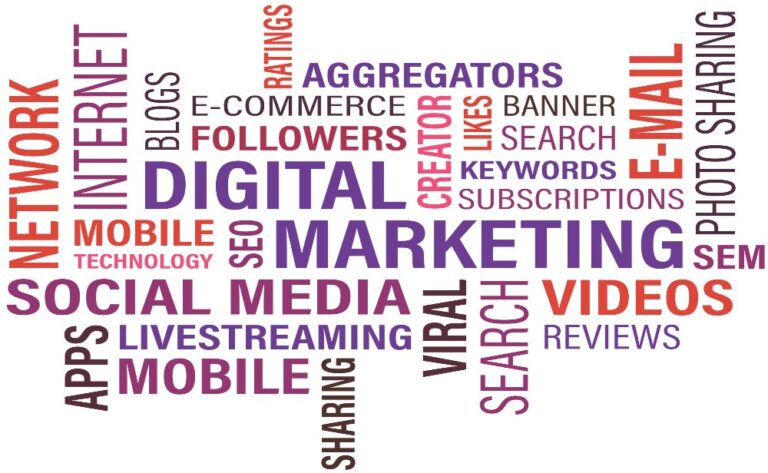The Best Social Media Metrics to Focus On In Your Campaigns
Measurement is an essential component of every social media plan that is worth its salt. You might be astonished, though, to learn how many marketers don’t bother to look at the data in any tabs beyond the one labeled “Overview.”
Even though it is common knowledge that it is essential to monitor those statistics (which is why they are presented so prominently), one can acquire significantly more insightful knowledge by performing more in-depth research on the topic.
Let’s take a look at the most popular platforms and determine which social media metrics are the most important to follow for each of them in order to increase brand awareness and optimize social media return on investment.
The Fundamentals Behind Facebook Metrics
Despite competition from TikTok, a relatively new social media platform, and YouTube, which currently holds the position of second most popular social media network, Facebook (which is owned by parent corporation Meta) is still the most popular social media network overall. Facebook provides businesses with a variety of advertising alternatives, each of which may be precisely targeted while yet reaching a large audience. So how exactly can you expand your audience and engage with them using Facebook analytics?
1. Engagement on Facebook Engagement is defined as the number of times people performed some sort of action in response to your post. Clicks, shares, comments, and other forms of interaction are all examples of actions.
This is an important measure to use to determine how much your audience enjoys the information you produce. Finding out what kinds of posts people interact with the most will help you develop a more effective content strategy. A higher level of engagement also helps your article appear in the newsfeeds of more of your followers.
2. The scope of Facebook’s reach
The term “reach” refers to the total number of users who have seen your post. Because of recent changes to Facebook’s algorithm, it is now significantly more difficult for messages to be noticed by organic users. Therefore, even if a company has a significant number of Facebook followers, this does not guarantee that the majority of those followers will see the company’s posts.
The ‘Overview’ tab of your Facebook Insights page will provide you with an overview of your reach, while the ‘Reach’ tab will provide you with more specific statistics. This is a helpful metric that may be used to help demonstrate the number of individual people who saw your campaign or content.
3. The number of impressions on Facebook
The number of people who saw your post is referred to as the reach, while the number of impressions refers to how many times your article was viewed. An increase of one in the reach figure corresponds to an individual who saw a single post on three separate occasions; this individual represents an increase of three in the impressions figure.
To view information on impressions, select ‘Impressions: Organic/Paid’ from the drop-down menu that may be found under the ‘Posts’ tab. With the help of this metric, you will be able to determine the total number of times that your advertisement was viewed.
Your frequency metric, which is the average number of times a person saw your advertisement, may be calculated by dividing your impressions by your reach. This will give you your frequency metric. When attempting to measure ad recall or brand uplift, this can be useful information to have.
4. The number of likes and followers a Facebook page has
Likes and followers on Facebook are significant metrics for measuring audience size. People who have indicated that they are fans of your page are counted as likes, while people who have indicated that they would want to see posts from your page on their newsfeeds are counted as followers (although the algorithm does not guarantee that they will).
It is essential to monitor the size of your audience on a regular basis to ensure that you are not losing more supporters than you are gaining.
The Fundamentals Behind Twitter Metrics
Marketers and companies have a lot to gain from using Twitter despite the fact that the network is always undergoing change. Because it operates in real time, hashtags can become popular very rapidly, and businesses can use tweets to increase customer engagement and promote brand recognition. Let’s have a look at the different metrics that may be viewed with Twitter analytics.
1. Twitter: Number of Impressions Received on Tweets
This indicator represents the number of times the tweet was displayed, either on the timelines of your followers, as the result of a like, or as a direct result of a search. This data can assist illustrate how your content or campaign has been pushed out to audiences outside of your follower list and can be discovered by clicking ‘View tweet activity’ in your Twitter analytics. It can also help show how many times your content or campaign has been retweeted.
2. Twitter – Engagements
Engagement on Twitter refers to any action a user has performed in response to your tweet, such as clicking on a link, retweeting, replying, or like your post. This metric indicates whether or not someone was inspired by your tweet to learn more about the topic or to share their findings with others. Under the tab labeled “Tweet,” you can see data pertaining to engagement. It’s a good sign that people appreciate or are interested in interacting with your material if you have a lot of engagements.
3. The most popular tweets on Twitter
You may discover the most popular tweet for the current month displayed on the homepage of your account in Twitter statistics. This tweet has received the most impressions, and it also includes the top card tweet (one that includes a card) and the top media tweet (includes a photo or video). It is a key sign of what performs well with your audience, whether it be the type of content, the hashtag that was used, the day and time that the tweet was sent out, or a combination of some or all of those elements.
4. Twitter: New Users Who Follow You
The number of new users who have decided to follow your Twitter account throughout the previous month is indicated by the tally labeled “New followers.” Following your brand on Twitter demonstrates a deeper level of connection than retweeting or like one of your tweets does. This is a helpful key performance indicator (KPI) for determining how well your brand is doing overall in terms of expanding its audience.
5. Twitter account with the most followers
The follower with the biggest number of followers of his or her own who has been following you over the course of the past month is considered to be your top follower. Your most loyal followers are the ones who, by actions such as favoriting and retweeting your tweets, have the greatest potential to disseminate your content to a wider audience.
6. Twitter: the most prominent mention
This is the tweet in which you were mentioned using your @handle, and it received the most impressions overall. Because they have a substantial number of followers and are actively involved with your company, the people who are responsible for your most popular tweets are frequently excellent candidates for potential influencer marketing initiatives.
Metrics for Instagram: The Fundamentals
According to the Business of Apps, Instagram is the fourth most popular social app in the world, with over two billion users accessing the platform on a monthly basis. Instagram, which has recently shifted its emphasis to video formats, has the potential to be an efficient medium for marketers that want to increase brand exposure and engagement, particularly among users older than 35. Let’s take a look at the most important indicators that should be tracked with Instagram analytics.
1. The Impressions section of Instagram
This is the amount of times that your audience has seen your post being displayed. This data is broken down even further by Instagram analytics, which shows the number of impressions that originated from hashtags, from home, or from profiles. Your article will receive more impressions if you use hashtags effectively.
2. Instagram – Reach
Reach is another important measure that should be considered when evaluating the performance of a post or campaign on Instagram. This refers to the number of unique users or accounts who viewed your content. It might also be called the total number of users.
3. Instagram — User interactions with content
This takes a look at the actions that people take while engaging with your material, such as liking it, commenting on it, sharing it, saving it, and replying to comments. The total number of user actions that have been taken in direct relation to your post is displayed here.
4. Instagram – Explore
Users of Instagram are able to discover fresh and relevant material from accounts that they may or may not presently be following thanks to the Explore function. It includes photos, videos (for more information, check out a guide to the various formats of Instagram videos), Reels, and Stories. It is made possible by an algorithm that Instagram uses to curate content based on accounts that are similar to the one being viewed or content that has been interacted with. The amount of users who are not already following you on Instagram but whom you have reached through a feature will be displayed in the insights of that feature.
5. Instagram: accounts reached and accounts engaged in conversation about the platform
These analytics demonstrate how many people are engaging with your feed and posts. The number of unique accounts that have seen your material at least once is referred to as accounts reached. This metric takes into account social media demographics such as the most popular nations, cities, age ranges, and gender.
The term “accounts engaged” refers to the number of distinct accounts that have interacted with your material and provides a breakdown (similar to what was done earlier) of each of these accounts.
Metrics for Pinterest: The Fundamentals
For businesses who regularly publish compelling visual material or photographs, Pinterest is the place to be. Due to the fact that the majority of users are female, it is perfect for businesses that wish to cater to that demographic. It is particularly good for enterprises in the fashion, beauty, decor, do-it-yourself, and food industries. Let’s take a look at the most important metrics that should be the primary emphasis while using Pinterest analytics.
1. Pinterest – Pins
People use bookmarks known as “pins” to save content that they find particularly interesting. These can take the form of films, photos, or even physical objects. Because pins can be searched for and their images can be clicked on, marketers may use them to direct traffic to a website or landing page in an effort to increase user engagement and conversions. When you track the number of pins, you can determine the average quantity of daily material that is pinned from your website. This helps you understand the click rate for pins as well as the number of clicks each pin receives.
2. Pinterest – Saves
The Saves feature, which was formerly known as repins, gives users the ability to pin or save your content onto their own boards. Following this procedure makes it possible for followers to view it in their feeds, thereby increasing the exposure and reach of your content. Monitoring the typical number of daily saves is a great approach to get a general idea of how well your content is performing.
3. Pinterest – Impressions & Engagement
Impressions and engagement are two key indicators that should be monitored on Pinterest, just as they should be on any other social media network. These provide you with information regarding how well your visual content is performing on the platform. Your content is clearly resonating with people if it has a high Pin impression rate. The Engagement metric displays the total number of interactions with your Pins, including the number of saves, clicks, swipes of carousel cards, clicks on collections, and forward and backward swipes of Idea Pins.
4. The most successful pins on Pinterest for generating sales
This is an important measure to monitor since it not only reveals which pieces of content are successful but also gives you the opportunity to investigate further into the reasons behind those successes. Is it due to the fact that it is a video, does it provide a solution to a problem, or does it have a connection to an influential person?
The Fundamentals of TikTok Metrics
According to the Business of Apps, despite being a relatively new platform, TikTok has already amassed more than one billion users in just a span of five years and generated $4.6 billion in revenue in 2021 alone. This popularity can be attributed to the platform’s intuitive design and high entertainment value.
It is also a platform that enables users and companies to become viral, thereby increasing the number of followers they have and their overall brand awareness. Let’s take a look at the metrics that you should be tracking on TikTok, as the platform is expected to undergo changes to its usability for businesses in the year 2023. (make sure you have a Business account to access analytics).
TikTok’s analytics are organized into the following tabs:
• LIVE Streaming
• Followers
• Overview
• Content
1. TikTok – Overview
You are able to access a variety of indicators, such as Engagement, Followers, and Content, in a consolidated view by clicking on the “Overview” tab. It is a fantastic method for gaining an understanding of the essential metrics that pertain to your TikTok account.
Video views and profile views are both displayed in this section. Profile views indicate the number of people who have looked at your profile; if increasing brand recognition is a key performance indicator for your company, this information is useful. Additionally, it displays information on shares, likes, comments, and follows.
2. The TikTok Material Tab The Content tab provides information regarding how well your video content is being received by users. It offers information on the total number of video views as well as trending videos, in addition to a video’s likes, comments, and shares.
It is able to delve deeper by informing you of the overall play time as well as the average watch time, as well as the audience that was reached and the number of people that viewed the complete video. You will gain a better understanding of what video material is engaging your audience by analyzing these indicators.
3. TikTok users who are following you
This tab will provide you with further information regarding your followers. It provides information on the gender, geography, and activity of followers, telling you when your followers are most likely to be online. In addition, there are the videos that your followers watch and the audio that they listen to.
4. TikTok – LIVE
Live video plays a significant role in TikTok and is a fantastic method for increasing interaction, earning incentives, or gaining access to free items such as Diamonds. This tab displays stats such as the total views and viewing time, along with the viewer count and the number of unique viewers.
5. A performance using a hashtag on TikTok
TikTok users are obsessed with hashtags, and as a result, analyzing their performance might be useful. The amount of times a hashtag has been viewed can be seen by looking at its “views” count. You can get a sense of what’s popular or trending by doing a search for a hashtag in the “Discover” section.
Metrics for LinkedIn: The Fundamentals
In 2019, LinkedIn will celebrate its 20th anniversary as a prominent social media platform that currently has more than 875 million users all over the world. In addition to being widely regarded as the most effective B2B platform, it is a setting in which individuals may construct and grow their professions. Discover how to monitor the success of your business-to-business marketing efforts with the help of LinkedIn analytics.
1. LinkedIn – Visitors
Visitor analytics can tell you who is coming to your page and will assist you in spotting peaks and valleys in traffic so you can determine which content is most popular. Make use of the filters available here (page views, dates, unique visitors) to go further into your visitor profile and uncover information such as job function, seniority, firm size, and industry.
2. LinkedIn — Members Who Follow You
You may learn about the individuals that follow your company page, as well as their backgrounds and demographics, through the Follower tool on LinkedIn. This measure will tell you who is following you and how you may most effectively interact with those individuals.
3. LinkedIn: Your Impressions and Level of Engagement
The number of times that your content has been viewed is measured in impressions. This statistic is essential since it not only informs you of the frequency with which your content is viewed but also enhances the likelihood that users will engage with it. You should also monitor the amount of unique impressions, which is the number of different LinkedIn users who have seen your post.
Calculating the engagement rate on LinkedIn involves tallying the number of interactions, clicks, and new followers gained, then dividing that total by the number of times a post was viewed. If you include this in your analysis, you will obtain a comprehensive view of how the content is functioning.
4. LinkedIn, a Rival to the Company
This tool can compare follower metrics and organic content metrics, and it can be found under the tab labeled “Analytics.” At the moment, access to this function is restricted to just some users. This can assist you in gaining insight into the followers of your competition and learning more about the types of articles that are successful for them.
Next Level Social Media Metrics
You may construct digital marketing KPIs to assist quantify how well your social media plan is functioning in terms of awareness, engagement, and consumer happiness if you do some further digging and computation. This will allow you to obtain some more valuable data. Let’s take a look at five advanced indicators for social media marketing that you ought to think about measuring.
1. The Rate of Increase in Followers
It seems to reason that as the number of people with access to the internet increases all over the world, brands should anticipate a comparable increase in the size of their audience on social media. Therefore, it is necessary to quantify the rate at which your brand is getting followers, and it is also important to compare your growth rate to the growth rate of your competitors.
The question “How much is our audience growing?” has been replaced with the question “How quickly is our audience growing?” as a result of this shift in thinking. If you see that the rate at which your social media audience is growing has slowed down, this may be an indication that you need to take action to offset the tendency.
Add up the number of new followers you gained across all platforms during the previous month, divide that number by the sum of all your audiences across all platforms, and then multiply the result by 100 to get your audience growth rate (to get it as a percentage).
You might want to consider performing the same calculation on the social media sites used by your competitors so that you can make a comparison.
2. The Social Distribution of Voices
The Social Share of Voice (SSoV) metric analyzes how frequently your company is mentioned across various social media platforms in comparison to all of your other businesses in your industry. It is a helpful method for determining how prominent, relevant, and “top of mind” your brand is among consumers within the industry it operates in.
Start by tracking all of the direct and indirect mentions of your brand that take place throughout the month on any and all social media sites, using either your handle or your real name. (There are technologies available to monitor and analyze social media that might make this process easier.) Carry out the same actions at your rivals. Calculating your share of voice is as simple as taking the total number of times your brand was mentioned, dividing that number by the total number of times all brands were mentioned, and then multiplying that number by 100.
3. The Rate of Amplification
The amplification rate is calculated by dividing the number of shares generated by a single post by the total number of followers. This reveals the frequency with which your audience spreads the word about your work. It is a key performance indicator (KPI) that displays how willing your audience is to associate and engage with your brand.
The greater your amplification rate, the more your followers are helping you to spread your message to a wider audience. To determine the amplification rate of a post, divide the total number of shares for that post by the total number of followers for that account, and then multiply that figure by 100 to get a percentage.
4. The Rate of Virality
There is a lot more that goes into determining the quality of a post than simply looking at the number of “likes” it has gotten or how many times it has been shared. The likelihood of a post becoming “viral” can be estimated by dividing the total number of times it has been viewed by the proportion of times it has been shared. The computation is straightforward: take the total number of shares, subtract them from the total number of impressions, and then multiply that amount by 100. This represents the rate of viral replication.
Let’s imagine that a single post received 400 likes, but out of the 20,000 individuals who saw it, only 2,000 people shared it. This post has greater potential than another one that earned 1,000 likes but was only shared by 2,000 people out of the total of 200,000 who saw it.
5. Social sentiment
While social share monitors your portion of the discourse taking place on social media platforms, sentiment analyzes how you are feeling and what you think about things. Which brings up an interesting question: when people talk about your brand online, do they say positive or negative things?
TalkWalker is one example of an analytics tool that is required for the calculation of social sentiment since it can analyse and classify both context and language.
Improve your capabilities in analytics for social media.
It is crucial to grasp the data that is behind the content if you employ social media marketing (which is what the majority of firms do). You will gain the in-depth information and practical skills necessary to traverse the social landscape by taking the social media marketing course offered by DMI. The course covers a wide range of topics, including social research, social strategy, social customer service, and social commerce, in addition to delving into the nuances of each of the most prominent platforms.







